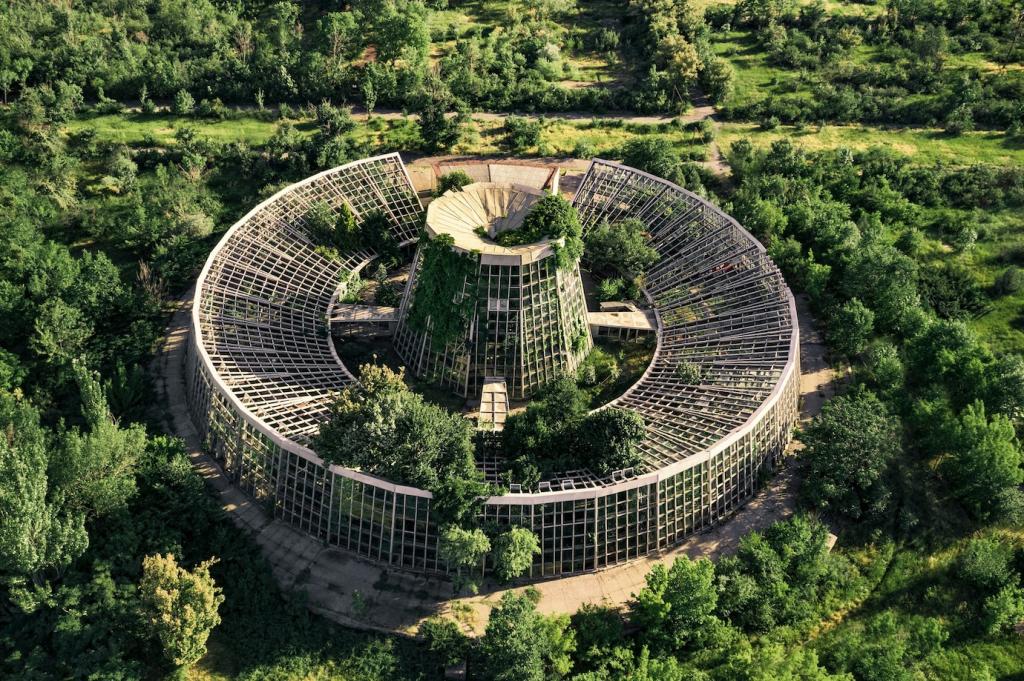Sustainable Materials for Interior Design
Sustainable materials have become a cornerstone of modern interior design, offering eco-friendly alternatives that promote a healthier planet and indoor environment. As people grow more conscious of their environmental footprint, designers and homeowners alike are seeking sustainable solutions that blend aesthetics, durability, and responsibility. This page delves into the world of sustainable materials, exploring their benefits, applications, and the considerations involved in integrating them into interior spaces.

The Importance of Responsible Sourcing
Responsible sourcing forms the foundation of sustainability in interior design. Carefully choosing where and how materials are obtained helps prevent deforestation, reduces carbon footprints, and ensures fair labor practices. Designers who prioritize responsible sourcing support suppliers that follow ethical guidelines, such as using wood from certified forests and promoting reclaimed materials. This approach not only protects the environment but also positively impacts communities and economies worldwide.
Longevity and Durability
Key to sustainability is the longevity of materials chosen for interior spaces. Sustainable design is not just about picking green products but also about selecting options that last, reducing the frequency of replacements and the associated environmental costs. Materials that resist wear, require minimal maintenance, and can be easily refurbished offer long-term value, lessening the strain on natural resources and waste management systems.
Healthier Interior Environments
Sustainable materials in interior design contribute to healthier living spaces by minimizing exposure to toxic substances commonly found in conventional products. Low-VOC paints, natural fiber textiles, and non-toxic finishes improve indoor air quality and reduce health risks for occupants. This focus on wellness aligns with the broader goals of sustainable living, where environmental responsibility is closely linked to human well-being.
Natural Wood and Bamboo
Forest Stewardship Council (FSC) certification guarantees that wood products are sourced from responsibly managed forests that provide environmental, social, and economic benefits. Using FSC-certified wood enables interior designers and consumers to trust that their purchasing choices support sustainable forest management. Not only does this contribute to the preservation of biodiversity, but it also assures that local communities are respected and involved in forestry decisions.

Recycled Materials and Upcycling
01
Recycled glass and metal are increasingly popular for countertops, tiles, fixtures, and decorative accents. Incorporating these materials reduces the need for new mining and manufacturing, processes which are energy-intensive and often environmentally harmful. The resulting products offer the same functionality and aesthetics as their non-recycled counterparts while adding a unique story and sustainable edge to interior spaces.
02
Textiles represent a major contributor to landfill waste, but upcycling initiatives are redefining how designers view fabric remnants and used garments. By repurposing these materials into rugs, upholstery, and wall hangings, the interior design industry is reducing waste and conserving resources otherwise used in textile manufacturing. The process often yields one-of-a-kind pieces, enriching interior environments with character and environmental integrity.
03
Natural stone and ceramic tiles are durable and attractive, but quarrying and production can be resource-intensive. Reclaimed stone and tile present a sustainable alternative, giving a second life to materials recovered from demolished structures or remnant stock. These products offer design flexibility and historically rich textures, allowing interiors to reflect both sustainability and timeless style.
Low-Impact Finishes and Paints
01
Low and Zero-VOC Paints
Low and zero-VOC paints reduce airborne toxins, improving indoor air quality and making environments safer for occupants, especially those with sensitivities or allergies. These paints achieve high performance and vibrant color without sacrificing health or environmental considerations. By choosing low-impact coatings, designers emphasize well-being alongside aesthetic objectives, aligning interiors with modern sustainability values.
02
Natural Oil and Wax Finishes
Natural oil and wax finishes are made from renewable resources such as linseed, beeswax, and plant-derived oils. These products penetrate wood, enhancing its natural beauty and durability without introducing toxic chemicals. They decompose safely at the end of their life cycle and require less energy to produce, embodying the principles of sustainable interior design in both manufacturing and application.
03
Water-Based Sealants and Adhesives
Traditional sealants and adhesives may contain harmful solvents and petroleum-based ingredients. Water-based alternatives, by contrast, minimize the emission of hazardous chemicals while providing durability and strong performance. Such products are less taxing on the environment during production and safer to use within homes and commercial spaces, supporting the drive for healthier and more eco-friendly interiors.
Sustainable Flooring Options
Cork Flooring
Harvested from the bark of cork oak trees without destroying the tree itself, cork is a renewable resource offering resilience, sound absorption, and comfort underfoot. Its hypoallergenic properties and natural resistance to mold and pests make it an ideal choice for health-conscious interiors. Cork’s unique texture and warm appearance create inviting spaces while demonstrating a commitment to ecological responsibility.
Linoleum vs. Vinyl Alternatives
Genuine linoleum is made from renewable materials such as linseed oil, cork dust, and natural pigments, distinguishing it from synthetic vinyl. Long-lasting and biodegradable, linoleum supports sustainable objectives by reducing reliance on petroleum-based flooring. Choosing natural linoleum over vinyl not only limits environmental impact but also enhances indoor air quality and aligns with green building standards.
Recycled Rubber Flooring
Flooring made from recycled rubber—often sourced from post-consumer tires—offers exceptional durability, slip resistance, and sound insulation. This innovative use of discarded material diverts waste from landfills and transforms it into a practical, attractive surface for residential or commercial interiors. Recycled rubber flooring is versatile, easy to maintain, and well-suited to high-traffic areas where sustainability and functionality are paramount.
Eco-Friendly Textiles and Upholstery
Organic cotton and linen are grown without synthetic pesticides or fertilizers, reducing environmental contamination and promoting soil health. These natural fibers are biodegradable and lend interiors a breezy, timeless elegance. Products made from organic textiles contribute to healthier indoor air and softer, more comfortable living spaces, meeting both practical and ethical design needs.

Innovative Green Materials

Bioplastics and Plant-Based Composites
Bioplastics and plant-based composites, derived from renewable agricultural residue and crops, provide sustainable alternatives to petroleum-based plastics and conventional composites. These materials are used in furniture, panels, and decorative accents, offering similar or superior performance characteristics. Their adoption reduces reliance on fossil fuels and accelerates the shift toward biodegradable or closed-loop products in interior spaces.

Mycelium and Mushroom-Based Solutions
Mycelium, the root structure of fungi, is gaining recognition as a game-changing material for interior applications. Grown using agricultural waste as feedstock, mycelium can be formed into lightweight, fire-resistant panels and acoustic tiles. These products are fully compostable at the end of their use, representing a leap forward in both material innovation and environmental accountability.

Algae-Derived Materials
Materials derived from algae, such as bioplastics or green wall systems, showcase the potential for living and regenerative design elements. Algae grow quickly and efficiently, capturing carbon while providing renewable raw materials for textiles, composites, and decorative surfaces. By integrating algae-based materials, designers embrace cutting-edge sustainability and demonstrate the transformative potential of nature-inspired design solutions.
Certifications and Industry Standards
LEED and Green Building Certification
The Leadership in Energy and Environmental Design (LEED) program is among the most widely recognized green building certifications, providing a framework for selecting sustainable materials and tracking overall project impact. LEED-certified interiors demonstrate excellence in energy efficiency, indoor air quality, and responsible sourcing, setting a benchmark for the industry. Designers pursuing LEED recognition reinforce their commitment to holistic sustainability.
GREENGUARD and Indoor Air Quality
GREENGUARD certification focuses on emissions from building materials and furnishings, ensuring they meet rigorous health-based criteria for indoor air quality. Products bearing this certification release minimal amounts of volatile organic compounds and other pollutants, providing reassurance to both designers and occupants. By specifying GREENGUARD-certified products, interiors can be more comfortable, healthier, and environmentally conscious.
Cradle to Cradle and Life Cycle Assessment
Cradle to Cradle certification and comprehensive life cycle assessments examine every phase of a product’s existence, from raw material extraction to disposal or reuse. This holistic perspective encourages the design and use of products that are safe for people and the environment, endlessly reusable or biodegradable, and manufactured with renewable energy. Adopting life cycle thinking shifts interior design from a linear to a circular model, aligning with the principles of regeneration and continuous improvement.
